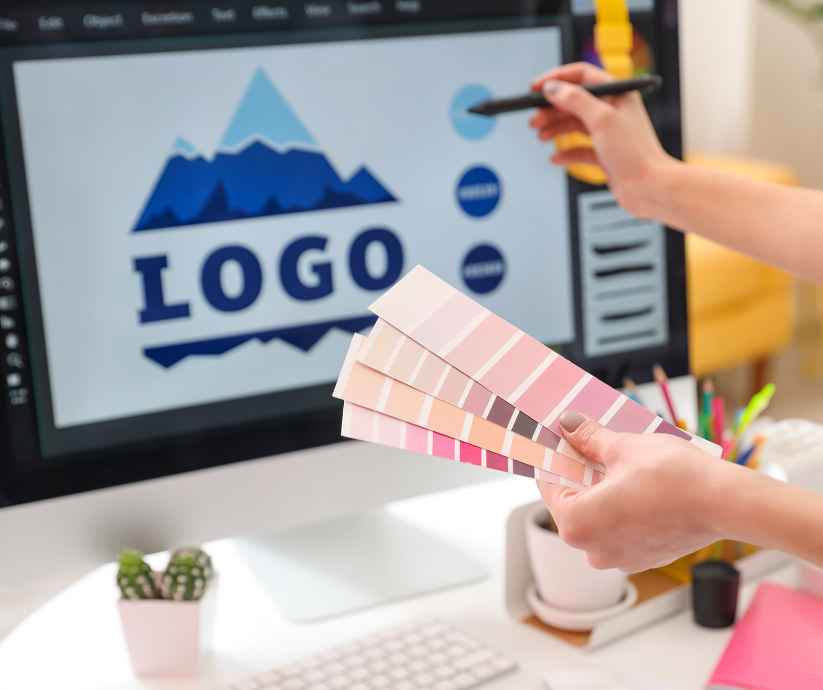Graphic design is a powerful visual medium that allows us to communicate ideas, evoke emotions, and captivate audiences across various platforms. From eye-catching advertisements to stunning logos and website designs, the world of graphic design surrounds us daily, influencing our perceptions and shaping our experiences. In this article, we will explore the fundamentals, principles, and evolving trends of graphic design, highlighting its significance in the digital age and how it continues to shape our visual landscape.
At its core, graphic design is the art of creating visual content using typography, imagery, colour, and layout to convey a specific message or tell a story. It blends aesthetics with functionality, employing various design elements and principles to achieve effective communication. Understanding these fundamentals is crucial for aspiring designers seeking to craft compelling visuals.
Typography plays a pivotal role in graphic design, as it involves selecting appropriate fonts, sizes, and spacing to enhance legibility and visual hierarchy. By manipulating typography, designers can evoke emotions, establish brand identities, and guide viewers through a design piece.

Imagery, including illustrations, photographs, and icons, brings life and depth to graphic design. It adds visual interest and aids in storytelling, creating a connection between the viewer and the design. Skilful image selection and manipulation can evoke specific moods, convey information, or provoke thought.
Colour, with its psychological impact and symbolic associations, plays a significant role in graphic design. By understanding colour theory and applying appropriate colour schemes, designers can evoke specific emotions, establish brand identities, and create harmonious visual compositions.
Layout and composition refer to the arrangement of various design elements within a space. By balancing elements such as text, images, and negative space, designers can create a visually pleasing and effective design. Attention to hierarchy, alignment, and proportion enhances readability and guides the viewer’s gaze.
Principles of Graphic Design
To create visually appealing and cohesive designs, designers must adhere to fundamental principles. These principles provide guidelines for organizing and arranging design elements to achieve balance, harmony, and impact.
- Balance: Achieving visual balance ensures that design elements are distributed harmoniously, creating stability and equilibrium. Balance can be symmetrical, asymmetrical, or radial, depending on the desired effect.
- Contrast: Contrast refers to the juxtaposition of different elements to create visual interest and emphasize specific information. By contrasting elements such as colour, size, or texture, designers can guide the viewer’s attention and create dynamic compositions.
- Emphasis: Emphasis directs the viewer’s focus to a particular element or area within a design. Through the strategic use of colour, size, or positioning, designers can create focal points that grab attention and communicate hierarchy.
- Unity: Unity refers to the overall coherence and consistency of a design. By maintaining a visual theme, and using consistent typography, colour schemes, and graphic elements, designers can create a sense of harmony throughout a project.
- White Space: White space, or negative space, refers to the empty areas surrounding design elements. It provides breathing room, enhances readability, and allows the viewer’s eyes to rest. Skilful use of white space can create a balanced and elegant design.

Evolving Trends in Graphic Design
As technology advances and design trends shift, the world of graphic design continuously evolves. Some notable trends shaping the field include:
- Minimalism: Minimalist designs with clean lines, ample white space, and simplified elements have gained popularity. This approach focuses on removing unnecessary clutter and distilling designs to their essential components.
- Bold Typography: Typography has taken centre stage in recent years. Designers experiment with bold and expressive fonts, combining them with creative layouts to create impactful designs that instantly grab attention.
- Authenticity: In response to an increasingly digital and impersonal world, there is a growing demand for authentic and human-centred designs. This trend emphasizes real-life imagery, hand-drawn elements, and organic textures, creating a sense of genuineness and relatability.
- Vibrant Colors: Designers are embracing vibrant and bold colour palettes to create visually striking designs that evoke emotions and make a lasting impression. Colour gradients and duotones are being used to add depth and visual interest.
- Responsive Design: With the rise of mobile devices and varying screen sizes, designers are adopting responsive design principles to ensure optimal viewing experiences across different platforms. This approach involves creating flexible layouts and fluid elements that adapt to various screen resolutions.
- Motion Graphics: Animation and motion graphics are increasingly utilized to bring designs to life and enhance user engagement. From subtle micro-animations to immersive video backgrounds, motion design adds an interactive and dynamic element to graphic design.

The Impact of Graphic Design in the Digital Age
In today’s digital age, graphic design has a profound impact on various industries and sectors, transforming the way we perceive and interact with information. Here are a few areas where graphic design plays a crucial role:
- Branding and Marketing: Graphic design is the cornerstone of branding and marketing efforts. Logos, packaging designs, advertisements, and website layouts are carefully crafted to establish brand identities, capture attention, and convey brand messages effectively.
- User Experience (UX) Design: UX design focuses on enhancing user satisfaction by improving the usability, accessibility, and enjoyment of digital products and services. Graphic design elements, such as intuitive interfaces, visual hierarchies, and consistent branding, contribute to creating seamless and delightful user experiences.
- Web Design and Development: Graphic design plays a vital role in web design, determining the aesthetics, functionality, and user interface of websites. Well-designed websites that prioritize user experience attract and retain visitors, driving engagement and conversions.
- Print and Publication Design: Graphic design continues to be essential in print media, including books, magazines, brochures, and posters. Thoughtful layout designs, typography choices, and visual storytelling techniques ensure that printed materials effectively communicate messages to their target audience.
Graphic design is a dynamic and ever-evolving field that merges artistic creativity with strategic communication. By understanding the fundamentals, principles, and emerging trends, designers can create visually appealing and impactful designs that captivate audiences and leave a lasting impression. As the digital age progresses, the influence of graphic design will only continue to grow, shaping our visual landscape and transforming the way we engage with information and experiences. So, whether you’re an aspiring designer or a business owner seeking to enhance your brand, harness the power of graphic design to unleash your creativity and tell your unique visual story.

